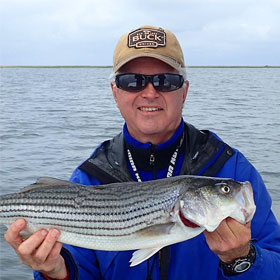The Fishery Conservation and Management Act
By Ken Schultz
Apr 02, 2019
What the Fishery Conservation and Management Act was intended to do for coastal fisheries, and how the newly adopted Modern Fish Act addresses recreational interests
While individual states are responsible for freshwater fisheries management within their borders, saltwater fisheries are overseen by the federal government. Until recently, the chief federal law defining this oversight has been the Magnuson-Stevens Fishery Conservation and Management Act.
Originally signed into law in 1976, the Magnuson-Stevens Fishery Conservation and Management Act (MSA) arose out of concern for the status of coastal fish stocks, the need to prevent overfishing, and the protection of essential habitat. The act was amended in 1996 and reauthorized in 2007.
One of the declared purposes of this fishery management act was to “promote domestic commercial and recreational fishing under sound conservation and management principles.” The Magnuson-Stevens Fishery Conservation and Management Act’s key action objectives are to prevent overfishing, rebuild overfished stocks, increase economic and social benefits, and ensure the availability of safe and sustainable seafood.
There’s been a lot of disagreement about whether the MSA has achieved, or is achieving, these objectives with respect to all species of concern, as well as over the methods and data used. Moreover, many individuals and organizations have felt that the recreational fishing sector has been overlooked and/or short-changed in the federal policies and actions that ensued. A leading advocate for recreational angling, the American Sportfishing Association (ASA), says that federal actions under MSA resulted in “shortened or even cancelled seasons, reduced bag limits, and unnecessary restrictions.
With saltwater angling having grown to 11 million annual participants, $70 billion in economic output, and the support of over 450,000 jobs, the Commission on Saltwater Recreational Fisheries Management was formed in 2013 to recommend a new way forward. In February 2014, the commission released its report, A Vision for Managing America’s Saltwater Recreational Fisheries. The report focused on the reauthorization of the Magnuson-Stevens Fishery Conservation and Management Act in six key areas:
- Establishing a national policy for recreational saltwater fishing
- Adopting a revised approach to saltwater recreational fisheries management
- Allocating marine fisheries for the greatest benefit to the nation
- Creating reasonable latitude in stock rebuilding timelines
- Codifying a process for cooperative management
- Managing for the forage base
Widely praised, this report formed the nucleus of federal legislation introduced in the House and Senate in 2017, and eventually the Modernizing Recreational Fisheries Management Act of 2018, now referred to as the Modern Fish Act. Essentially an amendment to the Magnuson-Stevens Fishery Conservation and Management Act (changing, adding to, or repealing some sections of MSA), it was signed into law on December 31, 2018. Proponents hope it will lead to an improvement in saltwater recreational fisheries management.
The Modern Fish Act adopted many, though not all, of the recommendations made by the Commission on Saltwater Recreational Fisheries Management. It did not, for example, require periodic examinations in the southeastern U. S. of how fisheries are allocated between commercial and recreational sectors. Nevertheless, ASA’s Government Affairs Committee Chairman Gary Zurn noted, “through passage of the Modern Fish Act, Congress is providing direction to NOAA Fisheries on a variety of policies that will ultimately lead to more stable fishing regulations, and better management and conservation of our marine fisheries.
According to the ASA, specific actions of the Modern Fish Act include:- Clarifying the authority of NOAA Fisheries to apply management approaches more appropriate for recreational fishing
- Improving recreational harvest data collection by requiring federal managers to explore additional data sources that have tremendous potential to improve the accuracy and timeliness of harvest estimates, such as state-driven programs and electronic reporting (e.g., through smartphone apps)
- Requiring a study on how mixed-use fishery allocations can and should be periodically reviewed by the South Atlantic and Gulf of Mexico Regional Fishery Management Councils
- Requiring a study on limited access privilege programs (catch shares) including an assessment of the social, economic, and ecological effects of the programs
Some view this as a first, albeit positive, measure in addressing the concerns of the recreational angling community. As Patrick Murray, President of the Coastal Conservation Association, put it, “There is still work to be done, but this is a valuable first step. We are hopeful this opens the door to an ongoing discussion of tools and processes that can be developed to better manage recreational fisheries in federal waters in all regions of the United States.









